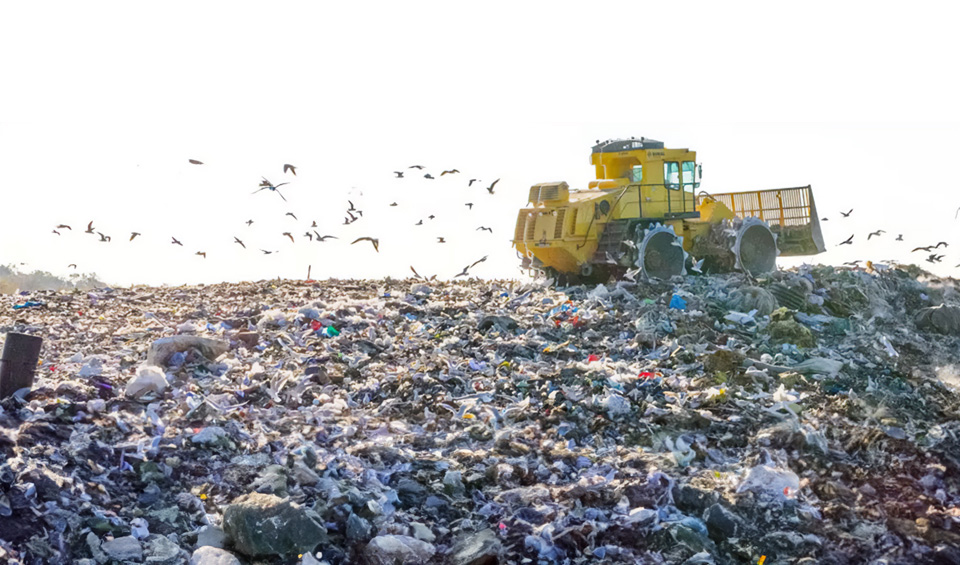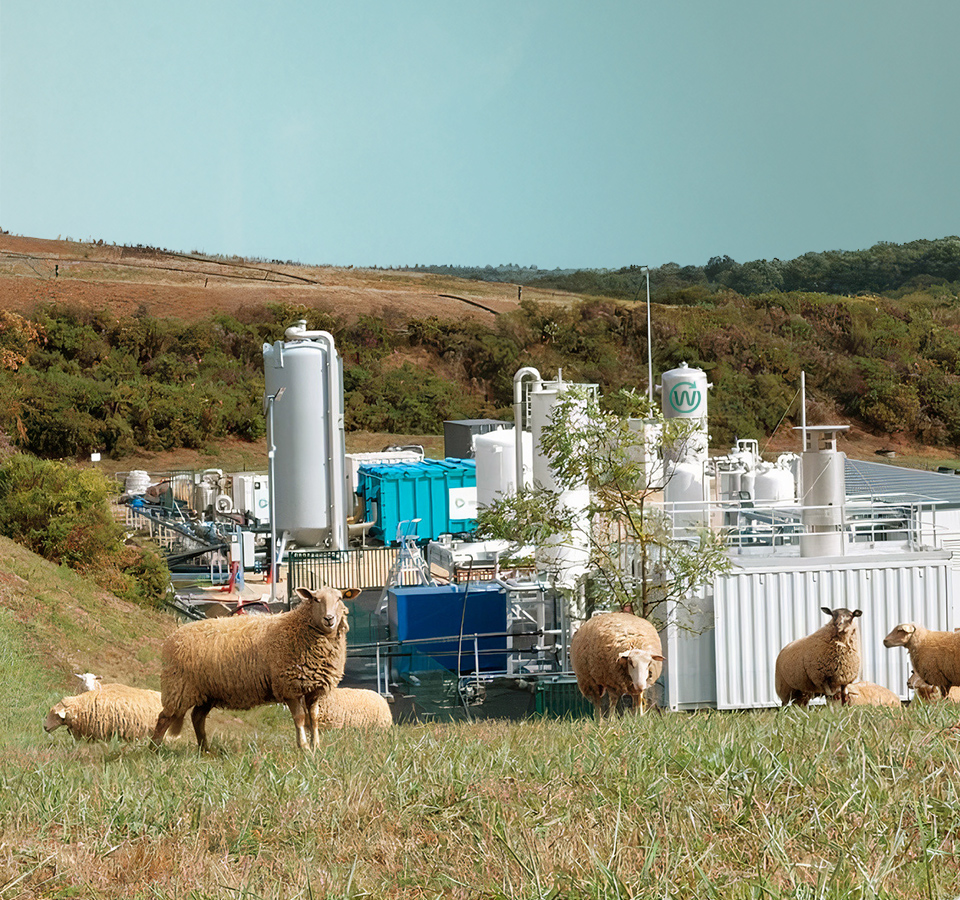Renewable substitute for fossil natural gas
Renewable natural gas (RNG) is a 100% renewable energy source. It is obtained by purifying the biogas produced through the decomposition of organic matter, which includes plants, agricultural and agro-industrial waste, household waste, sewage plant sludge, and more. RNG shares an identical chemical composition and properties with fossil natural gas, enabling it to be directly injected into the existing natural gas distribution network as a fuel and utilized to power vehicles in the form of compressed natural gas (CNG).
RNG is a neutral gas in terms of greenhouse gas (GHG) emissions. The carbon emitted during its combustion was actually absorbed by living organisms and was already in the atmosphere when they appeared, in what is known as the short-term carbon cycle. In contrast, the use of fossil fuels such as oil, coal, and natural gas releases carbon into the atmosphere that has accumulated over millions of years in the Earth’s depths.
RNG contributes to the development of the circular economy. It is produced locally from organic waste and consumed by homes and businesses for heating, hot water, cooking, and transportation. It can be easily stored and transported using the existing gas infrastructure.
As a pillar of the energy transition, RNG contributes to local energy independence and replaces fossil fuels for transportation and heating, which account for the bulk of our energy needs and the largest share of our greenhouse gas emissions.


Leading environmental compliance
The production and consumption of renewable natural gas emits just 23.4 g CO2-eq/kWh NCV1, 10 times less than fossil natural gas that is extracted from underground and imported.
As a fuel, RNG makes it possible to reduce greenhouse-gas (GHG) emissions by up to 90%, compared with natural gas, gasoline, or diesel.
1 The net calorific value (NCV) corresponds to the quantity of heat released during combustion per unit of volume or mass, without considering the energy supplied by the steam produced based on French data.
When an ecological imperative becomes an economic opportunity

The facts
The decomposition of organic matter at landfill sites is one of the main causes of methane (CH4) emissions released into the atmosphere, accounting for 5% of global greenhouse-gas emissions. This powerful greenhouse gas has a global warming potential 86 times greater than that of CO2 over 20 years. According to the IMF, methane responsible for about 30% of the rise in global temperatures since the beginning of the industrial era (1850-1900).
According to the World Bank, humanity produces nearly 2 billion tons of solid municipal waste (organic matter and other domestic waste, waste from offices, businesses, and building sites) every year. As the global population rises, this volume of waste is expected to grow by 70% by 2050.
A huge reservoir of renewable energy
Reducing methane emissions resulting from human activity is essential to keeping the rise in temperatures below 2°C compared to preindustrial levels, aligning with the goals of the Paris Agreement.
In a growing number of countries, landfill operators are required to recover biogas emitted by the spontaneous and natural combustion of organic matter, and when possible, to upgrade it to a source of energy (heat, electricity, or gas).
Among the existing solutions for recovering landfill gas, one is particularly effective from an energy and environmental point of view: converting it into RNG, a renewable substitute for fossil natural gas.
Landfill gas is composed of different gases: methane, carbon dioxide, oxygen, nitrogen, and other impurities. After upgrading it to 98% pure methane (now RNG), it can be injected into the natural gas distribution network to supply homes and businesses.
Already adopted by a significant number of the world’s leading waste management companies, this innovative biogas recovery solution has a dual benefit in reducing greenhouse-gas emissions and mitigating global warming:
- It effectively reduces methane emitted into the atmosphere.
- It replaces imported fossil fuels with locally produced renewable energy.

Renewable natural gas: the energy of the future
More countries are introducing proactive policies to encourage the production of RNG, enabling the sector to develop quickly. For example, the European Union has doubled its biomethane (also known as renewable natural gas) production targets, through the REPowerEU program, aiming for an annual volume of 35 billion cubic meters by 2030. By 2050, the EU is targeting biomethane production of 900 TWh, compared with 40 TWh in 2022.
The EU and the U.S. alone account for almost 90% of this increase. The U.S., the world’s largest biomethane producer since 2019, has seen significant growth of 20%, reaching 2 billion cubic meters in 2022 (i.e., almost 30% of global production), while the European Union has increase biomethane production by 15% to reach almost 4 billion cubic meters in 2022.
In France, biomethane production has risen by about 65% over 2021, to 0.65 billion cubic meters, making it the second-largest producer of biomethane in Europe.
In a July 2022 study on the outlook for biomethane production in EU Member States, the Gas for Climate consortium estimates that the countries with the highest production potential in 2050 are: France (22 billion m3 per year), Germany (22 billion m3 per year), Spain (20 billion m3 per year), and Italy (14 billion m3 per year).
